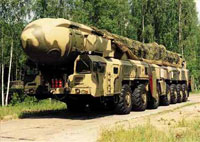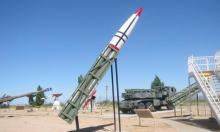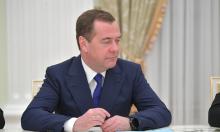U.S. peace initiative is a catch for Russia
On the face of it, the move appears to be a sign of concern expressed by those who really care for peace. A group of influential U.S. congressmen have called on President Bush to extend the Strategic Arms Reduction Treaty (START I), which is due to expire in 2009. However, there is more in it than meets the eye. A number of peculiarities of the treaty will enable the United States to build up its nuclear arsenal while restraining Russia’s nuclear capabilities.

In a letter addressed to President Bush, U.S. congressmen called on the president to extend the START I Treaty, a treaty between the U.S. and Russia on strategic offensive reductions and limitations. The letter was signed by chairmen of four committees of the U.S. House of Representatives, namely the House Committee on Armed Services, the House Committee on Foreign Affairs, the House Committee on the Judiciary, and the House Committee on Oversight and Government Reform.
“We are calling upon you to work together with the Russian Federation so that the treaty, expiring in December 2009, may be extended,” says the letter. The foreword seems quite peaceable and promises to ease nuclear tensions between the two countries provided the proposal finds favor with the president.
However, the devil is in the details or so the saying goes. The letter clearly recommends that President Bush consider the possibility of extending the treaty in “its present shape” i.e. the proposal virtually aims to create conditions for building up U.S. nuclear arsenal; whereas Russia’s nuclear capabilities would be restrained.
Pursuant to its newly adopted nuclear policy, the U.S. does not intend to really cut down on its strategic nuclear arms arsenal. On the strength of the concept of the so-called division of ICBM warheads into the operationally deployed warheads and reserve ones, the U.S. specifically interprets the number of warheads (1,700-2,200) permitted under the treaty as operationally deployed warheads.
In addition, the so-called reduction of the total number of warheads to the aforementioned level is carried out by removing a number of warheads from the missile systems which are put on combat alert duty. Within the framework of the treaty, the U.S. is to take 50 MX ICBMs (capable of carrying up to ten independently targetable re-entry vehicles) from the launchers while keeping both the launchers and missiles intact. However, the missiles are to be eliminated in accordance with Section 1 of the Protocol on Conversion.
Contrary to Russia’s expectations, the United States took a different path in eliminating its MX missiles. Only the fist stages of the ICBMs were eliminated as their second and third stages were stored for further use as components for putting together a “replacement” grouping in order to order to either rapidly deploy an additional grouping of ICBMs or develop the Hera medium-range ballistic missiles.
The United States crossed off the four pairs of long-range sea-based cruise missiles on the list of equipment slated for conversion. Two nuclear-powered ballistic missile submarines which are currently under repairs were deleted from the list too. Besides, a number of heavy U.S. bomber planes bound for reduction under the treaty were re-oriented on non-nuclear missions. The move enabled the U.S. exclude the aircraft from the framework of START I. The U.S. military “forgot” to carry out any re-equipment of the planes, though.
In the light of the above, we should stress the point that the U.S. approach to the implementation of the treaty does not provide for any elimination of strategic delivery vehicles, missiles launchers, submarine-launched ballistic missile systems, and heavy bombers. In other words, the United States is not planning to go head with any strategic offensive reductions program. In actuality, combat readiness of a part of U.S. strategic nuclear forces will be decreased. Consequently, the actual U.S. nuclear arsenal will continue to build up.
On the whole, the U.S. strategic nuclear capability may be maintained at the present level should the approach remains in force. If need be, the United States will be able to increase the number of its warheads up to 5,000-6,000. All sorts of speculation about years required for reaching the goal are groundless, that is just talk for those who are not in the picture.
The START I Treaty is due to expire on December 4, 2009. As a result, Russia will be allowed to equip its Topol-M missiles systems with multiple re-entry vehicles (the procedure is currently prohibited within the framework of START I) without spending more money on the development of a new missile.
The decommissioning of Russia’s older ICBMs with multiple re-entry vehicles (MIRVs) proceeds at a much faster pace than the putting of singe-warhead missiles on combat alert duty. By the year 2015, Russia will have to take down 74 of its older MIRV RS-18 missiles (carrying 6 warheads) and RS-20 missiles (carrying 10 warheads). The majority of 270 single-warhead Topol-M missiles will be decommissioned too.
The treaty calls for the reduction of both countries’ nuclear arsenal to 1,700-2,200 strategic nuclear warheads each. If the number of ground-based warheads continues to accountfor the half of all warheads on the inventory, we are talking about approximately one thousand strategic nuclear warheads.
Russia will be able to keep about 1,000 ground-based warheads by 2012. However, some experts fear a “collapse” that may occur shortly after 2015 when Russia slashes its MIRV missiles almost completely. That is when the possibility of re-equipping Topol-M missiles with MIRVs will come in handy.
The issue of extension of START I Treaty is closely related to the unilateral withdrawal of the Bush administration from the Anti-Ballistic Missile Treaty. The issue clearly concerns the deployment of missile interceptors in space as part of the unified complex of offensive nuclear forces. Last but not least, this is the issue that has to do with the use of powerful non-nuclear weapons on delivery vehicles of longer ranger and greater accuracy to destroy silo-based ICBMs.
U.S. congressmen are perfectly aware of legal obstacles the treaty is likely to create for Moscow. In the end, America could only benefit by taking advantage of the favorable conditions that would be created thereupon. As for the congressmen, they could become the champions of “nonproliferation” if their proposal goes through. The plan may appeal to President Bush who could carry on with the work his father has already started doing.
Vladimir Anokhin
Translated by Guerman Grachev
Pravda.ru
Subscribe to Pravda.Ru Telegram channel, Facebook, RSS!





